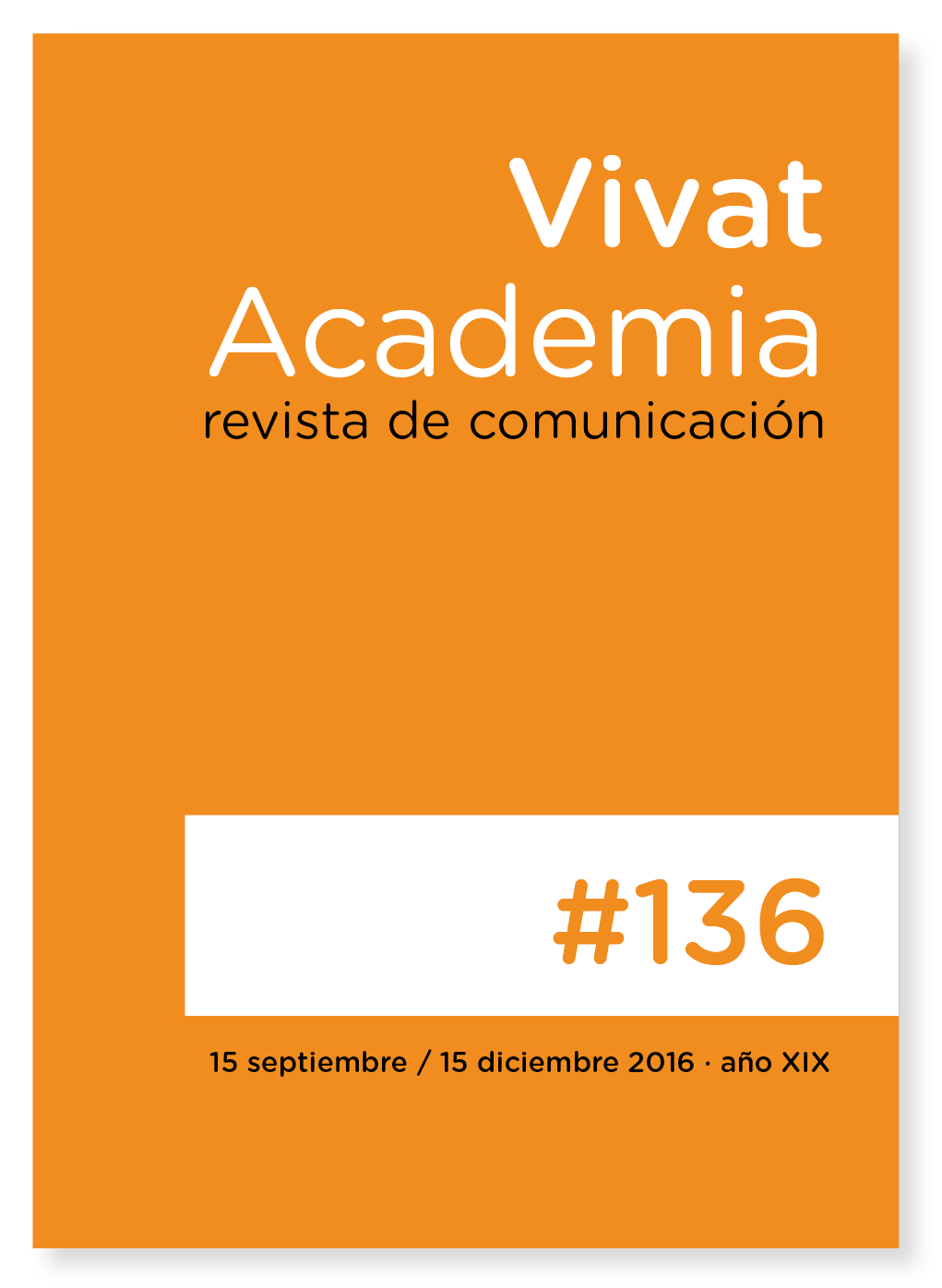Propuesta didáctica de análisis de la imagen audiovisual aplicada al documental “las estatuas también mueren” / Didactic proposal of analysis of audiovisual images applied to documentary "statues also die”
Contenido principal del artículo
Resumen
Así como la comprensión de la imagen fotográfica requiere de un sistema de registro que nos permita considerar los parámetros de análisis de forma sistemática, más aún sucede cuando nos enfrentamos con la imagen audiovisual (documental, cine, etcétera). Este artículo presenta una propuesta de análisis audiovisual aislando los fotogramas clave y analizándolos en una sucesión que parte de parámetros de análisis de la imagen fija. La fotografía a menudo supone la concreción de una sucesión de imágenes que permanecen en acto, esto es, la síntesis de una sucesión de imágenes. La elección del fotograma clave que contiene los parámetros de análisis, nos permite conjugar un sistema de análisis de imagen fija para imágenes audiovisuales. El artículo presenta tanto los parámetros de análisis, como una propuesta de aplicación práctica, analizándose las dos primeras secuencias del documental Las estatuas también mueren (Chris Marker, Alan Resnais y Ghislain Gloquet, 1953), donde reivindica un acercamiento crítico al etnocentrismo aplicado a las manifestaciones artísticas negroafricnas.
Descargas
Detalles del artículo
Citas
Complete books:
Chapter in a book or entry of a reference book:
Arnheim, R. (1976). Arte y percepción visual. Madrid: Alianza.
Arnheim, R. (1969): El pensamiento visual. Barcelona. Paidos.
Bardin, L. (1986). Análisis del contenido. Madrid: Akal.
Einstein, C. (2002). La escultura negra y otros escritos. Barcelona: Gustavo Gili.
Eisner, E.W. (2004). El arte y la creación de la mente: el papel de las artes visuales en la transformación de la conciencia. Barcelona: Paidós.
Gardner, H. (1982). Arte, Mente y Cerebro. Una aproximación Cognitiva a la Creatividad. Buenos Aires: Paidós.
Gil Urdiciain, B. (1996). Manual de lenguajes documentales. Madrid: Noesis.
Iniesta, F. (1998). Kuma. Historia del África negra. Barcelona: Bellaterra, Biblioteca de Estudios Africanos.
Kerchache, J., Paudrat, J. L., y Stephan, L. (1999). Arte africano. En La Enciclopedia Summa Artis (Vol. XLIII). Madrid: Espasa Calpe.
Laude, J. (1968). Las artes del África negra, Barcelona: Nueva Colección Labor.
Leiris, M. (1967). África negra: la creación plástica. Madrid: Aguilar.
Lowenfeld, V. (1961). Desarrollo de la capacidad creadora Buenos Aires: Kapelusz.
Maiez, J. (1993). Los lenguajes documentales y de clasificación: concepción, construcción y utilización en los sistemas documentales. Madrid: Fundación Germán Sánchez Ruipérez.
Malgesini, G., y Giménez, C. (2000). Guía de conceptos sobre migraciones, racismo e interculturalidad. Madrid: Catarata.
Marín, R. (2006). Didáctica de la educación artística. Madrid: Pearson Educación.
McClusky, P., y Thompson, R. F. (2002). Art from Africa: Long steps never broke a back. Seattle, Wash: Seattle Art Museum.
Pinto Molina, M. (1989). Introducción al análisis documental y sus niveles: el análisis de contenido. Boletín de la ANABAD, vol. 39, nº 2, p. 323-341.
Read, H. E. (1954). El significado del arte. Buenos Aires: Losada.
Sellier M., Lesage M. (2006) África, pequeño Chaka. Zaragoza: Edelvives.
Willett, F. (2000). Arte africano. Barcelona: Destino.
Torres, M. P. (1996). África. Reflexión geográfica sobre su población y compartimentación territorial. Espacio, tiempo y forma, serie V5, Geografía, 9(1), 11-37.





